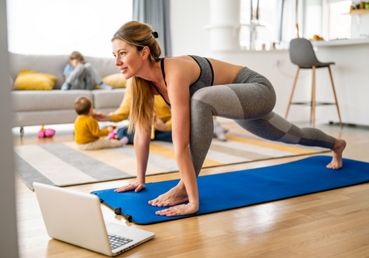Useful Tips: How To Exercise When You Have Chronic Pain

Posted by Alex Torres
It can be difficult to establish and maintain an exercise regimen. But this effort becomes even more difficult when you battle chronic pain. When your body is in pain, simply moving can prove challenging, let alone taking part in strenuous exercise.
But exercise is even more crucial for those with chronic pain. Doing it can offer numerous benefits, such as strengthening weak muscles, loosening stiff joints, and decreasing fatigue. Exercise can also contribute to reduced inflammation and improved sleep. Together, these benefits can help diminish pain altogether. The key is knowing how to exercise when you have chronic pain.
Discuss Exercise With Doctor
Everyone’s chronic pain stems from a different cause. In some cases, these causes can make it dangerous to do certain types of exercise. This is especially true if you’re recovering from an injury.
Before beginning to exercise, talk with your doctor. They will be able to tell you when it’s safe to start exercising, as well as what types of exercises would be most beneficial for you. This will help you avoid worsening your condition.
Find Ideal Types of Exercise
Exercise comes in many forms, and certain forms are harder on the body than others. It’s ideal to do multiple types of exercise, such as stretching, strength workouts, and aerobics. But whatever you try, you should strive to focus on low-impact activities.
A few low-impact exercises to try include:
• Swimming
• Yoga
• Cycling
• Walking
• Roller skating
• Rowing
Don’t Skip Rest Days
Whether you have chronic pain or not, rest days are almost as important as workout days. They allow your body can recover and your muscles to grow. When you’re just beginning to figure out how to work out with chronic pain, these resting is even more important.
If you’re resting but still interested in taking part in some activity, you can incorporate active recovery into your routine. Doing things like gentle stretching or walking will help you stay active while still allowing your muscles to heal.
Emphasize Muscle Recovery
Along with taking part in rest days, you should emphasize muscle recovery immediately following your workouts. Taking time to do a complete cool-down is essential, as is drinking enough water.
Other things can speed along the process as well. Massages can help muscle recovery and reduce chronic pain, making them a good choice when you’re regularly working out. Additionally, electrotherapy with a TENS unit can also help relieve pain and strengthen muscles. That’s why you should get TENS units for your fitness purposes.
SHARE:

